GET ASSURED A++ GRADE IN EACH BIOLOGICAL MACROMOLECULES ASSIGNMENT ORDER - ORDER FOR ORIGINALLY WRITTEN SOLUTIONS!
Biological Macromolecules Assignment
Little Miss Muffet Lab
Read the background information about separating milk. Then, perform the actual lab activity to separate milk yourself.
Activity: Separate Skim Milk and Whole Milk into Curds and Whey.
ENDLESS SUPPORT IN BIOLOGICAL MACROMOLECULES ASSIGNMENTS WRITING SERVICES - YOU GET REVISED OR MODIFIED WORK TILL YOU ARE SATISFIED WITH OUR BIOLOGICAL MACROMOLECULES ASSIGNMENT HELP SERVICES!
Q1. What does Iodine test for and what color indicates the strongest positive test?
Answer: Iodine tests for presence of starch. In the absence of the starch the original brown color of the iodine solution will be retained. The reaction between triiodide anion interacts with the starch molecule and forms a rich blue-black complex. This blue-black color is a confirmation for the starch in the give sample and is often referred to iodometry.
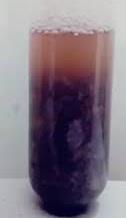
Positive test for iodine
Q2. What does the Biuret reagent test for and what color indicates the strongest positive test?
Answer: Biuret test also known as Piotrowski test is a key test in detecting the presence of proteins. The copper (II) ions present in the Biuret reagent reacts with the peptide bonds and is reduced to copper (I). The amount of protein is proportional to the color formed. The solution changes to purple color in presence of proteins.
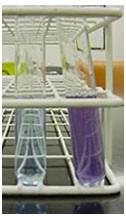
Q3. What does the Benedict reagent test for and what color indicates the strongest positive test?
Answer: Benedict reagent is used to test for presence of simple reducing sugars such as glucose. This is a common test for all the reducing sugars and presence of other sugars also gives the result. The solution turns red from a clear blue solution. The mechanism involved in this is the reducing sugar molecule are converted into enediols in an alkaline solution.
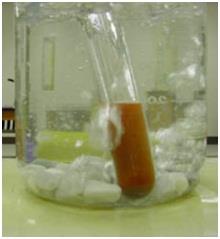
Q4. What does the Sudan III stain test for and what color indicates the strongest positive test?
Answer: Sudan stain reagent are organic compounds used for checking the presence of lipids. Sudan are known for their affinity to bind to the fat molecules. Lipids solubilize the dye to produce a red color
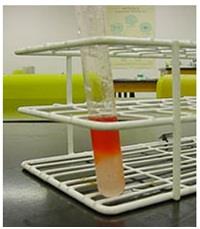
Q5. What would be a good negative control for all of these tests (same for all tests)?
Answer:A negative control is always essential in every test to check for any contamination in all the reagents. A non-reactive compound such as distilled water can serve as negative control
Q6. What would be a good positive control food for each of these tests (different for each test)?
Answer:a Benedicts test-pure solution of glucose
b Biuret test - egg albumin
c Iodine test - starch solution
d Lipid test - vegetable oil
NEVER BE CAUGHT IN PLAGIARISM, AVAIL BIOLOGICAL MACROMOLECULES ASSIGNMENT HELP SERVICE OF EXPERTSMINDS.COM AND SAVE HIGHER MARKS!
Q7. Why do we use a negative control?
Answer: negative control is used to ensure the result observed is due to the treatment & not some confounding variable such as contaminants present in reagent.
Q8. Why do we use a positive control?
Answer: positive control is used to test the ability of the reagent/experiment to detect phenomenon/substance it is testing for.
Circle the correct answer/answers or leave blank if no correct answers:
Q9. Is there sugar in whole milk? yes no
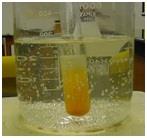
Q10. When you separate milk into whey and curds, where is the sugar? whey curds
Q11. Is there starch in whole milk? yes no
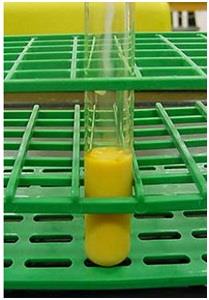
Q12. When you separate milk into whey and curds, where is the starch? whey curds
None.
NO PLAGIARISM POLICY - ORDER NEW BIOLOGICAL MACROMOLECULES ASSIGNMENT & GET WELL WRITTEN SOLUTIONS DOCUMENTS WITH FREE TURNTIN REPORT!
Q13. Are there lipids in whole milk? yes no

Q14. When you separate milk into whey and curds, where are the lipids? whey curds
Q15. Is there protein in whole milk? yes no
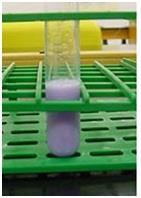
Q16. When you separate milk into whey and curds, where is the protein? whey curds
Q17. Which contains more protein? whey curds
Q18. Which of the 4 macromolecules are found in whole milk?
Answer: Proteins and lipids
Q19. Which of the 4 macromolecules are found in cheese?
Answer: Proteins and lipids
Q20. Traditionally, whey was considered a waste product of cheese production, although farmers would often feed it to their pigs.
Answer: Search the internet and list a few ways whey is used now so that it isn't wasted.
a Whey protein is used as dietary supplementto improve the stamina by increasing the muscle performance.
b Used in production of whey cheeses such as ricotta, and whey butter
c Control the intensity of the autoimmune disorders.
d Effective in the regulation of the sugar levels in the blood in the condition of diabetes.
ORDER NEW COPY OF BIOLOGICAL MACROMOLECULES ASSIGNMENT AND SECURE HIGHER MARKS!
Q21. Animal rennet works best from 85 - 105 degrees Farenheit (29 - 41 degrees Celcius) and also works best in an acid (low pH) environment. Why? (Think about where it comes from).
Answer: Animal rennet is a mix of enzymes such as chymosin, pepsin and lipase produced in stomachs of ruminant animals. The enzymes have an optimum temperature in which their conformation is preserved to work effectively. In Rennetthe enzymes present are acidic with an optimal temperature of 37C. The gastric acids secreted insidestomach maintain a pH 1.5 to 3.5 provide the ambient circumstances.
Q22. Why do we get animal rennet from calf stomachs? (What is it about them that causes it to work?)
Answer: the key component of rennet is an enzyme called chymosinwhich has a proteolytic action and has a function of cleaving the proteincasein chain in milk. In the older calves/animals the chymosin is eventually replaced by pepsin which is unsuitable for general curd production. Hence animal rennet is extracted from younger calf stomachs.
Q23. Did you produce more curds from skim or whole milk? What caused the difference in curd yields?
Answer: Whole milk will produce more curd in quantity. The amount of saturated fat present in whole milk is high when compared to skim milk. Skim milk is produced after the removal of fat content.
Q24. Were there any other differences in the curds produced from skim versus whole milk?
Answer: the curds produced from skim milk (0.5%) has lesser amount of saturated fat compared to whole milk curd (3.5%). Whole milk has a rich creamy consistency and has a better flavor than skim milk which is watery appearance and bland. An 8 ounce of skim milk provides 90 calories whereas the whole milk provides 140 calories.
24/7 AVAILABILITY OF TRUSTED BIOLOGICAL MACROMOLECULES ASSIGNMENT WRITERS! ORDER ASSIGNMENTS FOR BETTER RESULTS!